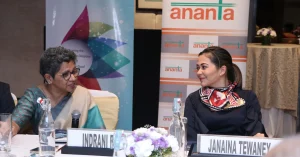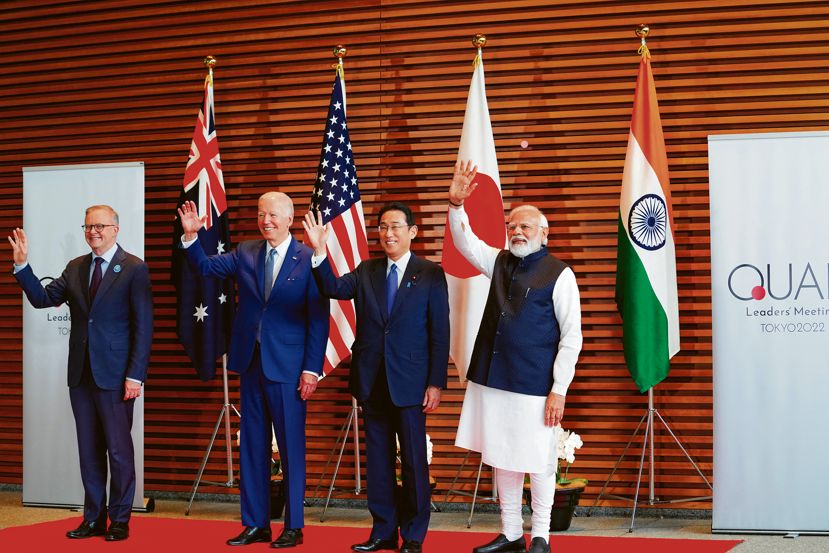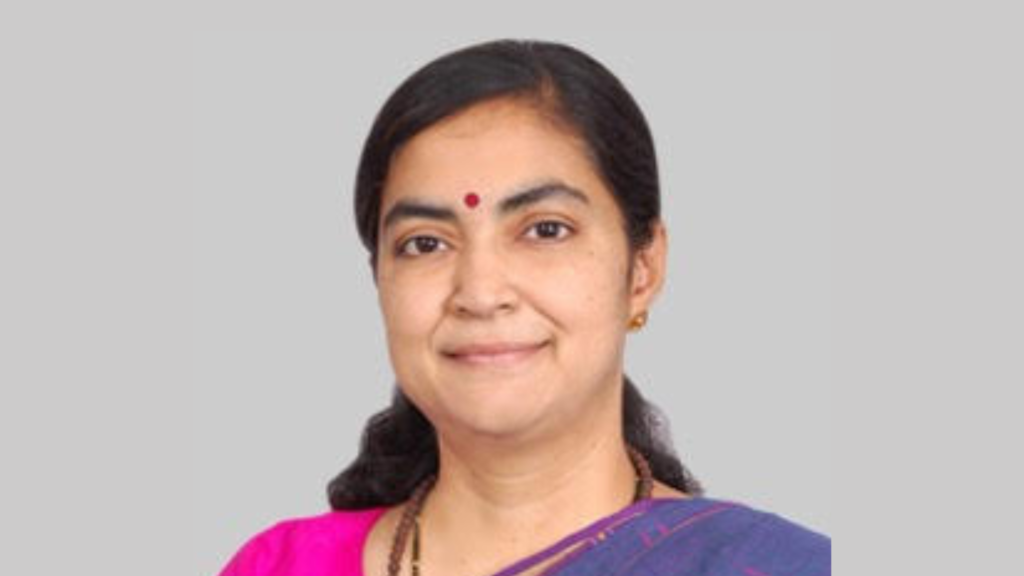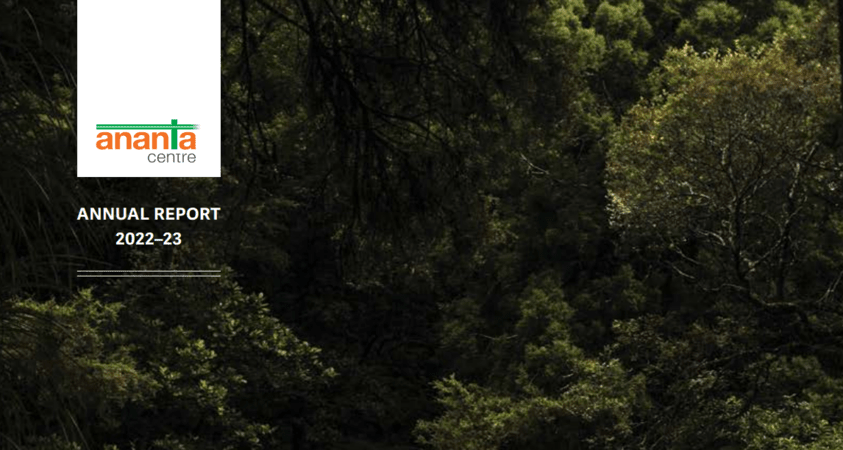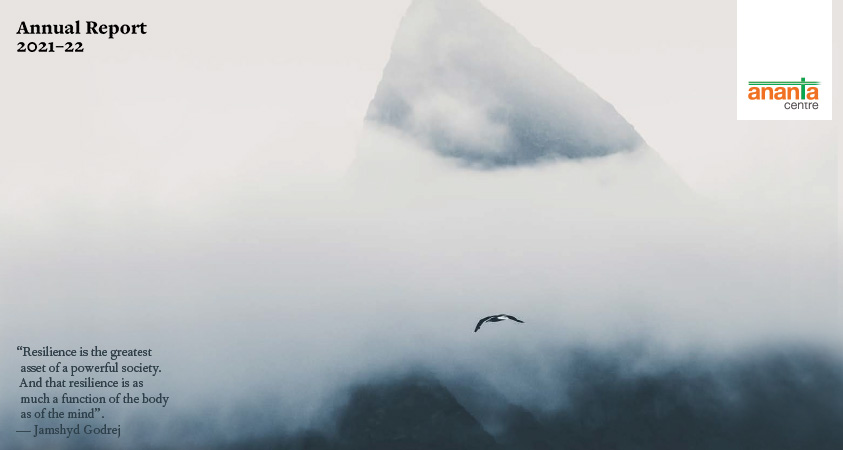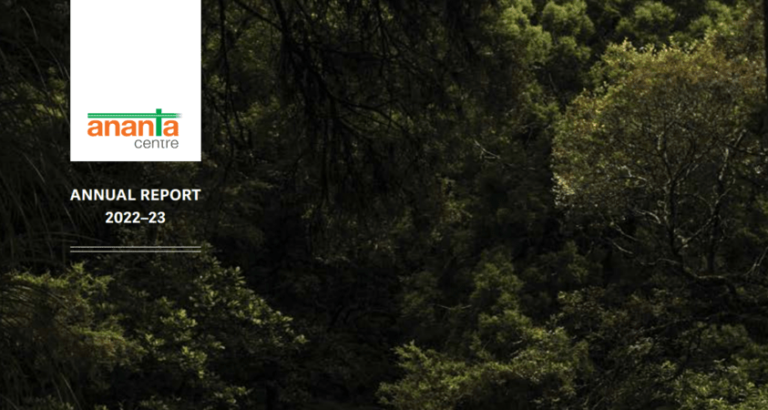H I G H L I G H T S
• Union Budget for 2021-22: An Assessment
• Using a fiscal crisis to lend greater transparency
• No increase in revenue spend, but a big boost to capex
• Stability in direct taxes, but Customs review worrying
• Big reforms announced; implementation will be the key
• Privatisation and asset sale to raise resources
• Higher FDI & foreign ownership in insurance allowed
• Legislative reforms for ease of doing business
• Idea of a bad bank makes its debut; DFI makes a comeback
• States to follow a tougher fiscal consolidation plan
• Modest social sector outlays & missing focus on jobs
• New farm cess with different rates poses challenges
• Depreciation on goodwill acquisition denied
Union Budget for 2021-22: An Assessment
An evaluation of Finance Minister Nirmala Sitharaman’s Budget for 2021-22 must be undertaken while keeping in mind the economic backdrop against which it was presented to Parliament on February 1, 2021. Four important developments and areas of concern helped build that backdrop.
One, the Indian economy was heading into its steepest contraction or a decline in gross domestic product (GDP) since the country gained independence in 1947. An estimated contraction of 7.7 per cent was going to be not just the steepest decline, but also the first to be recorded after 40 years – the previous occasion when India’s GDP fell was in 1979-80 and the decline then was by 5.2 per cent.
Two, the country was still struggling to contend with the challenges that the Covid-19 pandemic had posed. The impact of the pandemic on lives and livelihoods was huge. The economy had begun recovering, though only from a statistical point of view. But there was no recovery on the jobs front, raising questions on demand sustainability in the medium term. Healthcare delivery and healthcare infrastructure needed to be strengthened to help the country face the challenges of the pandemic.
Three, the government’s fiscal situation had worsened even before the pandemic had spread its tentacles. Growth too had slowed before the pandemic had struck the economy. The fiscal deficit in 2019-20 had widened to 4.6 per cent of GDP and economic growth had decelerated to 4 per cent. The challenges in 2020-21, therefore, became even more serious. The economy contracted, the government’s revenues fell and its expenditure burden rose, with the obvious consequence of the fiscal deficit estimate going haywire.
Four, there was considerable doubt over the Modi government’s ability to undertake bold reforms. The two-month long farmers’ agitation had forced the government to make an offer to keep the three reformist farm laws in abeyance for 18 months. Yet, the agitation got more intense and even worse. There were, therefore, serious questions on whether the government had developed cold feet about undertaking other reforms, which were urgently needed to revive the economy.
So, in the context of these four critical issues, what did Ms Sitharaman do in her Budget 2021? Here are a few focus areas that one cannot miss in what turned out to be her third consecutive Union Budget.
Using a fiscal crisis to lend greater transparency
The Budget has used a difficult fiscal year to its advantage. The finance minister has converted the huge challenge, posed by falling revenues and the pressure to spend more in the pandemic year of 2020-21, into an opportunity to introduce transparency in the government’s fiscal consolidation efforts. Seeing that the fiscal deficit would have exceeded the budgeted target of 3.5 per cent of GDP by a huge margin in any case, the finance minister decided to clean up the government’s balance sheet.
Consider the grim scenario. Its gross tax revenue fell short of the Budget target by a margin of 22 per cent in 2020-21. Its non-tax revenue too suffered a shortfall of 45 per cent, compared to what was estimated in the Budget, just as the shortfall in disinvestment receipts was larger at over 85 per cent.
In contrast, its expenditure, compared to the Budget target for the current year, increased by about 6 per cent for defence, by 29 per cent for transportation, by 21 per cent for finance, by 22 per cent for health, by 49 per cent for rural development (mainly for the rural employment guarantee programme), by 89 per cent for fertiliser subsidy and by 265 per cent for food subsidy. All other items of expenditure, however, had been squeezed. But the overall impact on expenditure was huge – an increase of about Rs 4 lakh crore or about 13 per cent over the Budget estimate. Not surprisingly, the fiscal deficit for 2020-21 ballooned to 9.5 percent of GDP against the Budget target of 3.5 percent.
But of this total increase of Rs 4 lakh crore, about Rs 1.5 lakh crore was on account of clearing of dues on account of past food subsidy bills, earlier borne by the Food Corporation of India or FCI. This meant substantial cleaning up of the government finances. What’s more, the finance minister reduced the government’s recourse to off-Budget borrowing by 32 per cent, compared to her own Budget estimate, with the promise that this would be reduced further by 76 per cent in 2021-22.
The problem of off-Budget borrowing (which does not get captured in the headline fiscal deficit figures put out by the government) has become serious in the last few years. However, the finance minister began reducing such borrowing last year and has continued the process this year and has now promised to bring it down to just Rs 30,000 crore next year, compared to Rs 1.26 lakh crore in 2020-21. Off-Budget borrowing is composed of bonds serviced by the government and loans taken from the National Small Savings Fund or NSSF.
The problem of NSSF loan however has not fully disappeared. Even after prepaying the past dues of Rs 1.5 lakh crore of NSSF loans taken by the FCI, the outstanding amount under this head, to be cleared next year, or whenever the government chooses to do so, is estimated at over Rs 1 lakh crore.
For 2021-22, the Budget projects a substantially lower fiscal deficit of 6.8 percent of GDP, riding on a tight control on expenditure (an increase of less than 1 percent) and a 15 percent rise in net revenue. But a gross tax revenue rise of 17 percent on a projected nominal GDP growth of 14.4 percent implies a tax buoyancy rate of 1.2, a tough task under all circumstances.
No increase in revenue spend, but a big boost to capex
What the Budget, therefore, has managed to achieve is to present a picture of higher expenditure in the current year. But this increase is largely to clean up the balance sheet. The government’s revenue expenditure, for instance, has gone up from the Budget estimate of Rs 26.3 lakh crore to a Revised estimate of Rs 30.11 lakh crore in 2020-21, an increase of 14 per cent. But of the total increase of Rs 3.81 lakh crore, as much as Rs 1.5 lakh crore or 39 per cent is on account of clearing past dues. For the coming year, the revenue expenditure of the government actually goes down to Rs 29.3 lakh crore – a drop of less than 3 per cent. And exclude the interest payment obligation from the revenue expenditure, the drop becomes larger at 9 per cent.
There is, however, a substantial boost to capital expenditure in the Budget. Not only that, the government has shown an improved capacity to absorb and implement the higher capital outlays it announced during the year. The Budget for 2020-21 had projected a capital expenditure of Rs 4.12 lakh crore, which was a 22 per cent rise over what was spent in 2019-20. During the year, the government had increased this outlay by Rs 25,000 crore. And now the government expects that the total capital expenditure during 2020-21 would be about Rs 4.4 lakh crore. This is a welcome sign. What’s more, the capital expenditure outlay for 2021-22 has been further raised by about 26 per cent to Rs 5.54 lakh crore. Indeed, with revenue expenditure falling, it is the capital expenditure that has helped the government show a less than one per cent increase in its total expenditure to Rs 34.83 lakh crore in 2021-22.
Stability in direct taxes, but Customs review worrying
Unlike most years in the past, the finance minister this year resisted the temptation of tinkering with the direct tax rates in the Budget. In a bid to simplify the tax administration, ease compliance and reduce litigation, Ms Sitharaman announced the formation of a Dispute Settlement Committee to address the concerns of tax payers up to an income level of Rs 50 lakh through an online faceless system. In addition, the cut-off period for reopening of tax cases, excluding those where tax evasion claims could be more than Rs 50 lakh, has been reduced from six years to three years. A better deal for the non-resident Indians, exemption from audit for taxpayers with an income up to Rs 10 crore if they carry out 95 per cent of their transactions digitally and relief to small trusts were among a few other measures announced in the Budget. But the fact that the tax base was not narrowed and the exemptions raj not widened came as a relief.
The worrying aspect in the Budget was a big initiative to rationalize the Customs duty regime. Although the stated objective of the rationalization – to promote domestic manufacturing and helping India get onto global value chain and increase exports – was laudable, the move may trigger fears of higher tariffs and a return to a protectionist regime. Many items saw their import tariffs go up and the Customs on a few others was brought down. Such a selective and discretionary approach, vulnerable to sectoral lobbies, may hurt competition and reduce the choice for consumers. More worrying is the decision in the Budget to review the Customs exemptions on as many as 400 items. This is likely to create uncertainty in the minds of a large section of consumers and industry players using such exempted items.
Big reforms announced; implementation will be the key
A positive surprise from Budget 2021 was the bold push towards reforms from which past finance ministers and governments have shied away. Privatisation was no longer a dirty and avoidable word. Instead of presenting them only as strategic sales, the finance minister boldly announced them as part of her plans on privatisation. In addition to IDBI Bank, two more public sector banks and one general insurance company would be privatised during 2021-22. “This would require legislative amendments and I propose to introduce the amendments in this Session itself,” she said.
A bigger privatisation push was evident from her statement on a new public sector policy, cleared by the Union Cabinet. The objective of the policy was to minimise the presence of central public sector undertakings (PSU), including financial institutions, and create new investment space for the private sector. Future growth of central PSUs and state-owned financial institutions would be achieved through infusion of private capital, technology and best management practices to help enhance growth and create new jobs. The proceeds from such sales would be used to finance various social sector and developmental programmes. The new policy, significantly, covered existing central PSUs, public-sector banks and public-sector insurance companies.
The action points under the policy were equally ambitious. The government would privatise all central public sector undertakings (PSU), barring a “bare minimum” of central PSUs operating in four types of strategic sectors. The four strategic sectors are: Atomic energy, space and defence; transport and telecommunications; power, petroleum, coal and other minerals; banking, insurance and financial services. Interestingly, the Budget gave clear hints that a nuanced approach will be followed: For central PSUs in non-strategic sectors, all of them will be privatised and those that cannot be sold off would be closed. For central PSUs in strategic sectors, only a few of them will be maintained as such. The remaining enterprises would be either privatised or merged or converted into subsidiaries of other central PSUs or closed.
The Budget outlines a road map for implementing the policy. NITI Aayog is being asked to prepare a list of central PSUs to be taken up for the next round of strategic disinvestment. A revised mechanism is to be put in place to ensure timely closure of central PSUs that are sick or loss-making and have not got any buyer. What’s more, the finance minister also promised an incentive package for states to roll out a similar strategic sales policy covering public-sector companies under their ownership. The incentive package would be funded by the Union government.
Privatisation and asset sale to raise resources
In addition to the privatisation policy, the finance minister announced the setting up of a special purpose vehicle in the form of a company to carry out monetisation of non-core idle assets including surplus land, lying with central ministries and public sector enterprises. Such monetisation could take place either by way of direct sale or concession.
With a similar objective in mind, the Budget unveiled the government’s plan to launch a National Monetisation Pipeline, which will consist of potential brownfield infrastructure assets. The idea is to identify a list of operational assets and put them up for sale to private sector entities to run them. These would include toll roads, constructed by the National Highways Authority of India, segments under the Dedicated Freight Corridor operated by the Indian Railways at present, new state-run airports, power transmission assets, oil and gas pipelines of Gas Authority of India, Indian Oil and Hindustan Petroleum Corporation, airports in Tier II and Tier II cities run at present by the Airports Authority of India, warehousing assets of Central Warehousing Corporation and NAFED, sports stadia and railway infrastructure assets.
The move to raise resources through privatisation and monetisation of assets is significant especially because the government has chosen not to mobilise resources from higher taxes. The share of taxes in GDP remains almost static at less than 10 per cent. There has been no effort at raising non-tax revenues either, which will continue to languish at just about 1 per cent of GDP in 2021-22, almost the same as that prevailed in 2020-21. In 2019-20, this share was 1.6 per cent of GDP. The shift in emphasis towards raising more resources from asset sale and privatisation is perhaps a strategic move, away from raising more taxes or non-tax revenues.
Higher FDI & foreign ownership in insurance allowed
In line with the Modi government’s policy on attracting foreign direct investment, the Budget took a big step forward in the insurance sector. The opening up of the insurance sector to foreign investment has remained politically controversial and the pace of this reform has been tardy. It has taken almost 20 years, since reforms began in this area, before India’s insurance sector is now open to foreign investment up to 74 per cent. In 2000, private companies were allowed into the insurance sector with a 26 per cent cap on foreign investment. The cap on foreign equity was raised to 49 per cent in 2014. And now this cap is being raised to 74 per cent. This essentially will allow foreign ownership of insurance companies, with safeguards. The safeguards would ensure that the majority of directors on the board of such insurance companies and their key management personnel would be resident Indians and at least 50 per cent of the directors on their boards would be independent directors and a specified per cent of profits would be retained as general reserve to provide them financial adequacy.
Legislative reforms for ease of doing business
A host of other measures announced by the finance minister shows the government’s inclination towards improving the ease of doing business in India. A plethora of laws governing the securities markets has been a cause for confusion and concern for both domestic and foreign investors., In addition to the Securities and Exchange Board of India Act, there are three other laws that govern the primary and secondary markets: the Depositories Act, the Securities Contracts (Regulation) Act and the Government Securities Act. While the securities contracts law was framed in 1956, the others came into being in post-reforms India. – from 1992 to 2007. Ms Sitharaman’s Budget announced the decision to rationalise these four laws into a single Securities Markets Code.
Similarly, a permanent institutional framework is being set up to encourage participation in the corporate bond market and enhance secondary market liquidity. The proposed body would purchase investment-grade debt securities and help in the development of the bond market, which will go a long way in meeting funding needs for investment projects with a long gestation period, in particular. In the same spirit of improving the ease of doing business, the Budget announced the plan to decriminalise the provisions under the Limited Liability Partnership Act of 2008, just as the task of decriminalising all provisions under the Companies Act was completed. A separate administrative structure for multi-state cooperatives was also proposed so that necessary support could be provided to them.
Idea of a bad bank makes its debut; DFI makes a comeback
The Budget has proposed the creation of an asset restructuring and management company that would take on board the stressed loans of banks and resolve them. This is expected to free the banks from the burden of their sticky loans and capital requirement. The proposal for an asset reconstruction company has to be seen in the context of the government’s decision to make a Budget allocation of only Rs 20,000 crore for recapitalising the public sector banks and expedite the privatisation of at least two public-sector banks during the year. Simultaneously, the government also wants to set up a development financial institution to meet the financing needs of the infrastructure projects.
States to follow a tougher fiscal consolidation plan
The states have been given a tougher target on fiscal consolidation. While the Centre has committed to reduce its fiscal deficit to 4.5 per cent of GDP by 2025-26, the states are expected to return to 3 per cent of GDP by 2023-24. This was because of a recommendation made by the Fifteenth Finance Commission to that effect. Even with respect to transfer of taxes to the states under the new devolution formula, the states have got a combined share of only 30 per cent in total gross tax collections of the Centre, marginally up from 29 per cent in 2020-21. In 2019-20, the states’ share in the Centre’s gross tax collections was 32 per cent. The states are likely to complain even on account of the restructuring of the centrally sponsored schemes and a tightening of the allocation of resources made under them.
Modest social sector outlays & missing focus on jobs
On the expenditure side, the allocation for rural development has seen a 10 per cent decline in 2021-22 to Rs 1.95 lakh crore. This could be based on the government’s estimate that the demand for work under the Mahatma Gandhi National Rural Employment Guarantee Scheme may decline. The allocation for agriculture and allied activities has seen a tiny increase of 2 per cent to Rs 1.48 lakh crore next year. The allocation for education has gone up by 9.5 per cent to Rs 93,224 crore, but social sector experts will complain that this reflects a continued neglect for this key segment of the economy. The most puzzling allocation is for the health sector. While the finance minister announced a hefty increase in the allocations for health and well-being in her Budget speech, the Budget documents show that the spend under health alone will decline by 9.5 per cent to Rs 74,602 crore in 2021-22. The Budget also has no clear provision or new scheme to create more jobs, even though this was a big challenge before the economy after the pandemic. The increase in the capital expenditure could be argued to be one such measure, with more investments in infrastructure jobs creating more jobs. But such job creation through infrastructure projects takes time.
New farm cess with different rates poses challenges
In an attempt to raise more resources to improve agricultural infrastructure, the Budget has levied the Agriculture Infrastructure and Development Cess (AIDC) on a few items. The levy of a cess is problematic because the revenues raised are not shared with the states. The finance minister, however, in a post-Budget meeting stated that the cess collected from AIDC would be shared with the states. But unlike other cesses, AIDC is to be applied on different items at different rates, causing some confusion. It would be applied on the Customs duty on a few items like gold, silver, apple, a few varieties of pulses, alcoholic beverages, crude palm oil, crude soyabean and sunflower oil, urea, coal, lignite and peat. Similarly, the excise will be levied on a few Seventh Schedule items including petrol and diesel. The government expects to raise an additional revenue of about Rs 30,000 crore in a year. The finance minister has also promised that the new levy would not put additional burden on consumers. In other words, the burden may have to be carried or absorbed by the manufacturers or importers.
Depreciation on goodwill acquisition denied
The Budget proposes a new provision in the taxation law with retrospective implications. It effectively denies tax depreciation benefits so far enjoyed by companies on their merger and acquisition of business. In such mergers and acquisitions, a good part of the transaction value is on account of the goodwill of the company. Such goodwill valuation has always been allowed to be claimed as depreciation while calculating the capital gains for the company that is acquiring a new business or merging itself with another business. Budget 2021 has proposed that this denial of tax depreciation on capital gain on goodwill will take effect from the current financial year. But tax experts believe this to be a retrospective amendment since any depreciation on past goodwill acquired with effect from April 1, 1998, will not be available. The new provision in the taxation law can cause fresh litigation and deny the government some goodwill.
Supported by
………………………………………………………………………………………………
(The views expressed are personal)
………………………………………………………………………………………………





